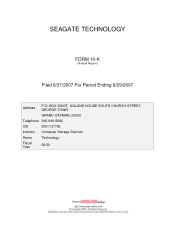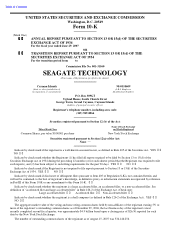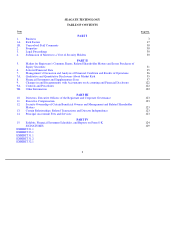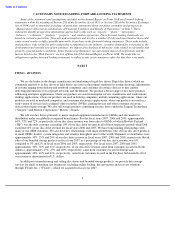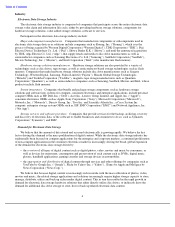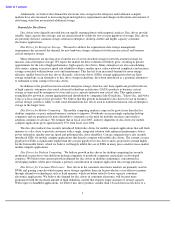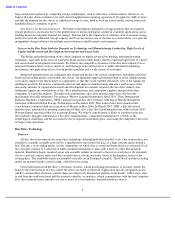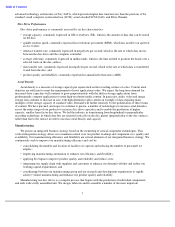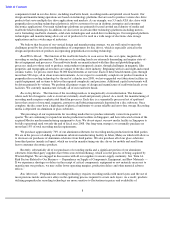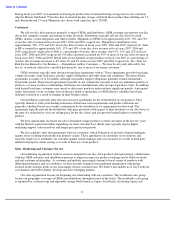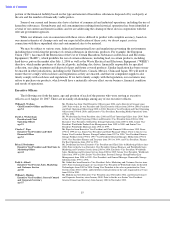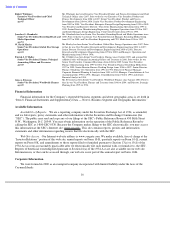Seagate 2006 Annual Report Download - page 10
Download and view the complete annual report
Please find page 10 of the 2006 Seagate annual report below. You can navigate through the pages in the report by either clicking on the pages listed below, or by using the keyword search tool below to find specific information within the annual report.
Table of Contents
advanced technology architecture (ATA); SATA, which provides higher data transfer rates than the previous ATA
standard; small computer system interface (SCSI); serial attached SCSI (SAS); and Fibre Channel.
Disc Drive Performance
Disc drive performance is commonly assessed by six key characteristics:
Areal Density
Areal density is a measure of storage capacity per square inch on the recording surface of a disc. Current areal
densities are sufficient to meet the requirements of most applications today. We expect the long-term demand for
increased drive capacities will continue to grow proportionately with the shift in storage applications from
predominantly compute applications to more high-resolution media content. In particular, audio, video and image
storage data continue to increase in size, with high definition video content an example of data requiring many
multiples of the storage capacity of standard video. Demand will further intensify by the proliferation of these forms
of content. We have pursued, and expect to continue to pursue, a number of technologies to increase areal densities
across the entire range of our products to increase disc drive capacities and to enable the production of higher
capacity, smaller form factor disc drives. We led the industry in transitioning from longitudinal to perpendicular
recording technology, in which data bits are oriented vertically on the disc platter (perpendicular to the disc surface),
rather than flat to the surface in order to increase areal density and capacity.
Manufacturing
We pursue an integrated business strategy based on the ownership of critical component technologies. This
vertical integration strategy allows us to maintain control over our product roadmap and component cost, quality and
availability. Our manufacturing efficiency and flexibility are critical elements of our integrated business strategy. We
continuously seek to improve our manufacturing efficiency and cost by:
Manufacturing our disc drives is a complex process that begins with the production of individual components
and ends with a fully assembled unit. We design, fabricate and/or assemble a number of the most important
7
•
storage capacity, commonly expressed in GB or terabytes (TB), which is the amount of data that can be stored
on the disc;
•
spindle rotation speed, commonly expressed in revolutions per minute (RPM), which has an effect on speed of
access to data;
• interface transfer rate, commonly expressed in megabytes per second, which is the rate at which data moves
between the disc drive and the computer controller;
•
average seek time, commonly expressed in milliseconds, which is the time needed to position the heads over a
selected track on the disc surface,
• data transfer rate, commonly expressed in megabytes per second, which is the rate at which data is transferred
to and from the disc; and
•
product quality and reliability, commonly expressed in annualized return rates (ARR).
• consolidating the number and location of facilities we operate and reducing the number of personnel we
employ;
•
employing manufacturing automation to enhance our efficiency and flexibility;
•
applying Six Sigma to improve product quality and reliability and reduce costs;
• integrating our supply chain with suppliers and customers to enhance our demand visibility and reduce our
working capital requirements; and
• coordinating between our manufacturing group and our research and development organization to rapidly
achieve volume manufacturing and enhance our product quality and reliability.

